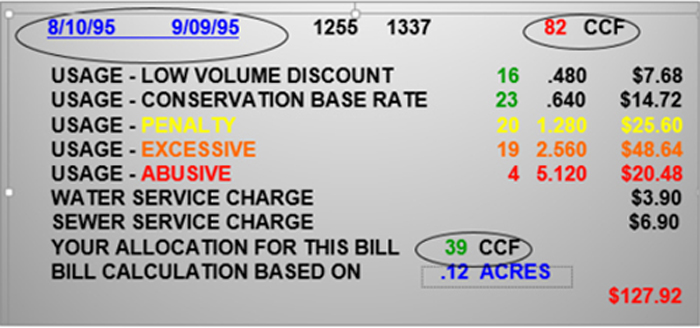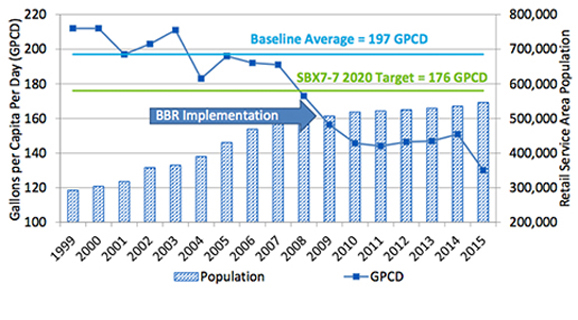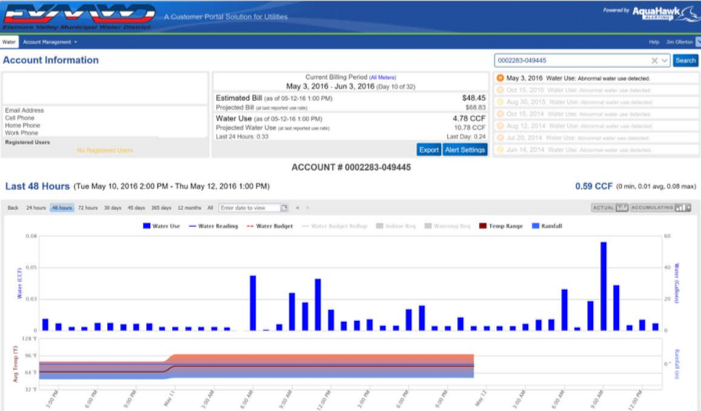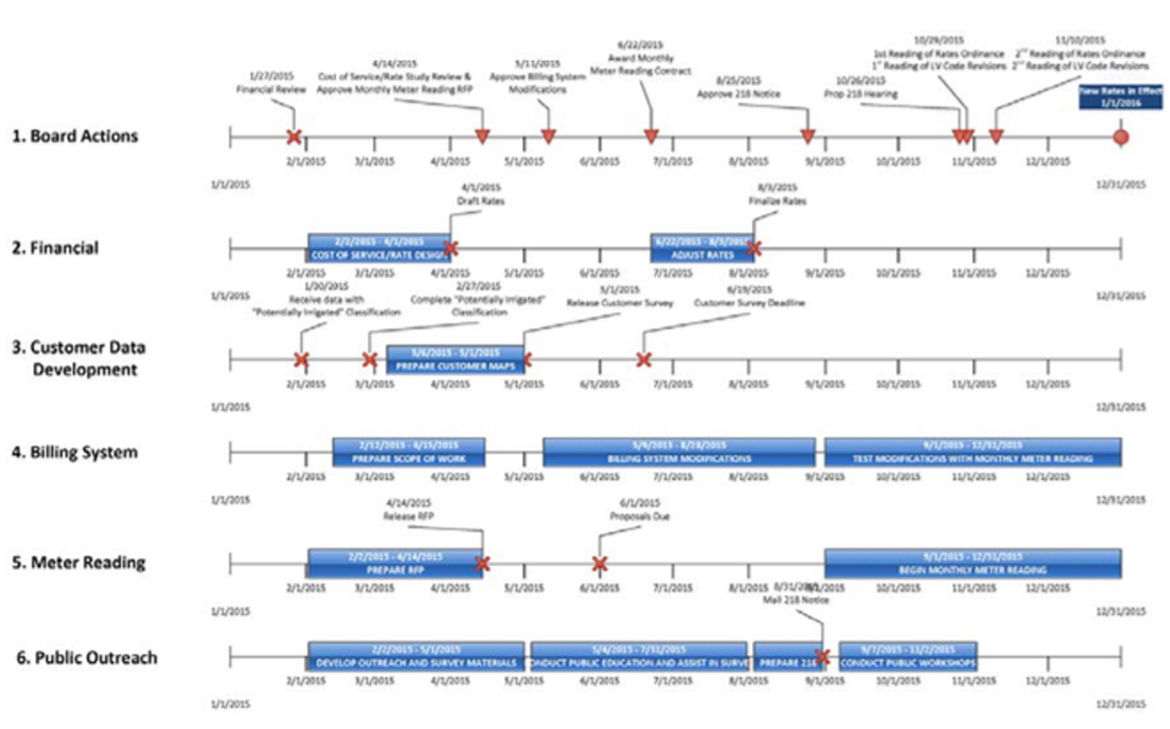|
|
|
Irvine Ranch
Water District |
IRWD was the first agency to implement
BBRs in 1991. The goal was to create a conservation ethic was setting a science- based target for efficient and/or necessary water use. Naming the tiers was one of the most valuable and helpful features of the first BBR design because it called attention to water use practices and got the attention of customers. |
 |
Eastern Municipal
Water District |
When EMWD implemented BBRs, residential and dedicated landscape customers were converted first as they together accounted for 92% of the potable retail water demand. A study conducted on the effectiveness of EMWD’s BBRs showed a 15% saving over time by residential customers. |
 |
Elsinore Valley
Municipal Water District |
EVMWD had an accelerated BBR implementation period of 9 months and also transitioned to a new billing system at the same time. EVMWD plans to implement advanced metering infrastructure with an online portal where customers can see their actual water use and leaks can be detected more quickly. |
 |
Las Virgenes Municipal
Water District |
LVMWD implemented BBRs on January 1, 2016 after a roughly 10 month process. The graphics show the project team organizational structure and outreach plan, as well as the project schedule adopted. |
 |




